Appearing in mid-October 2020, the LG Wing packs a lot of features into its groundbreaking design, including a triple camera powered by a Qualcomm Snapdragon 765G processor that runs Android 10. Its principal OLED display, which can rotate between portrait and landscape orientations, has a plastic screen cover to reduce overall weight (still a hefty 260 g, or 9.17 oz), while the second smaller, stationary screen is glass-covered. Let’s take look at how well LG’s dual-screen “wing” phone fared in our Display testing protocol.
Key display specifications:
- Principal: rotating P-OLED
- Size: 6.8 inches (~87% screen-to-body ratio)
- Dimensions: 169.5 x 74.5 x 10.9 mm (6.67 x 2.93 x 0.43 inches)
- Resolution: 1080 x 2460 pixels
- Aspect ratio: 20.5:9, ~395 ppi
- Refresh rate: 60 Hz
- Secondary: OLED screen
About DXOMARK Display tests: For scoring and analysis in our smartphone and other display reviews, DXOMARK engineers perform a variety of objective and perceptual tests under controlled lab and real-life conditions. This article highlights the most important results of our testing. Note that we evaluate display attributes using only the device’s built-in display hardware and its still image (gallery) and video apps at their default settings. (For in-depth information about how we evaluate smartphone and other displays, check out our articles, “How DXOMARK tests display quality” and “A closer look at DXOMARK Display testing.”)
Test summary
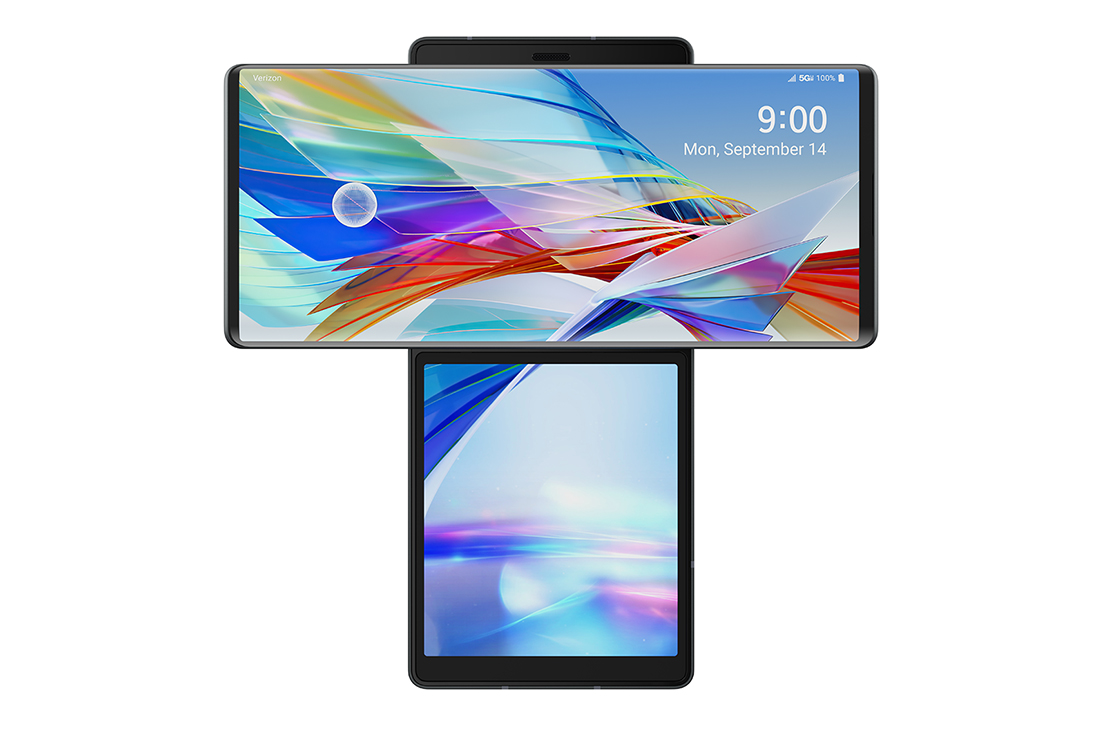 LG Wing
LG Wing


Please note: DXOMARK engineers carried out several objective measurements and perceptual analyses to ensure that the performance and behavior of the LG Wing’s secondary display is comparable to that of the principal display. Most importantly, we verified that the second screen does not affect the performance of the main screen; specifically, in all tested lighting conditions, use of the secondary display does not reduce the brightness of the main screen.
The LG Wing’s overall score of 88 puts it in a three-way tie for fourth place in our current Display rankings alongside the Apple iPhone 12 Pro Max and the OnePlus 8 Pro. This very respectable result is attributable to solid scores in most categories, with the device particularly strong in control of artifacts, where it ties for first with the OnePlus 8 Pro.

Readability
LG Wing
70
76
DXOMARK uses the device’s gallery app to show static (still image) content when measuring the device’s display for brightness, contrast, gamma, and blue light impact, etc.
The LG Wing’s score is not too far from the top-performing TLC 10 Pro for good readability, which is arguably one of the most important attributes for a smartphone display. Our engineers observed that the Wing’s default setting is slightly dazzling in low-light environments, and that while it has a fair brightness level in outdoor conditions, it could be more readable. It performs better in indoor conditions.
The comparison shots below illustrate the LG Wing’s quite good readability indoors:

Indoors, the LG Wing takes too long to react to rising light levels, although the transition is smooth. Transitions lack smoothness in response to falling light levels, as the device flickers and shows a distinct drop in brightness at the end. Outdoors, the phone increases in brightness but lacks a smooth response to both rising and falling light levels.
As for brightness uniformity, a brightness gradient is noticeable from the top to the bottom the LG device, and there is a color shift from top to bottom, as shown below left:
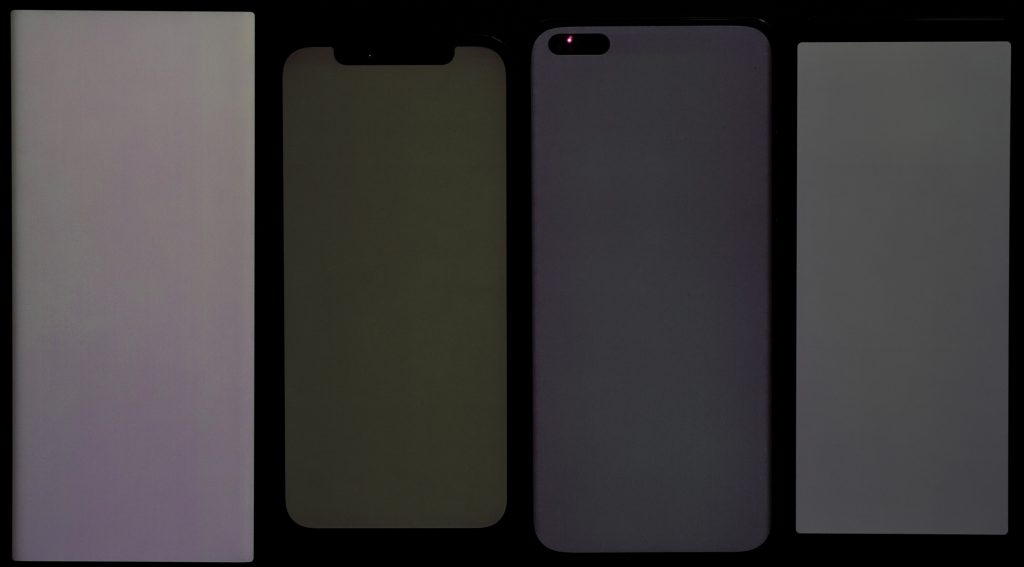
Although it loses some brightness when held at an angle, the LG Wing remains readable because its significant on-axis brightness makes up for the loss.
The LG Wing does not reduce its brightness sufficiently to adapt to nighttime conditions, even with the blue light filter (BLF) on:
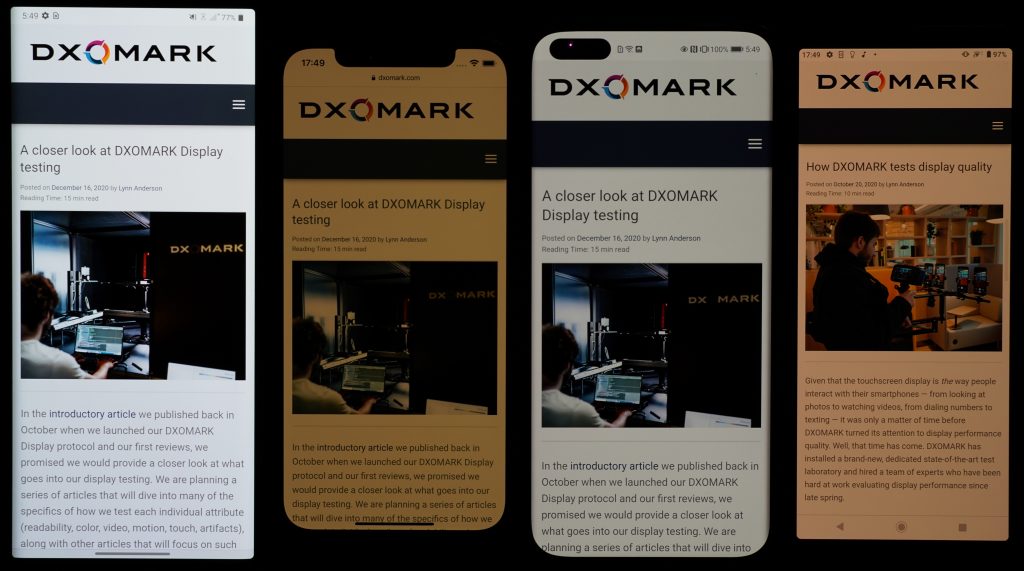

Color
LG Wing
76
92
DXOMARK uses the device’s gallery app to show static (still image) content when measuring the device’s display for white point, gamut, uniformity, color fidelity, and blue light filter impact, etc.
A 76 for color is not a bad score, but it is not one of the LG Wing’s strongest attributes and is a ways off the pace of the class-leading OnePlus 8 Pro (88). Like many smartphones, the LG Wing does not adapt its white point to the ambient lighting. Indoors, a green cast is visible on most contents, and in some instances, the saturation is too intense. Outdoors, the green cast is as noticeable as it is indoors and can clearly be seen on skin tones.
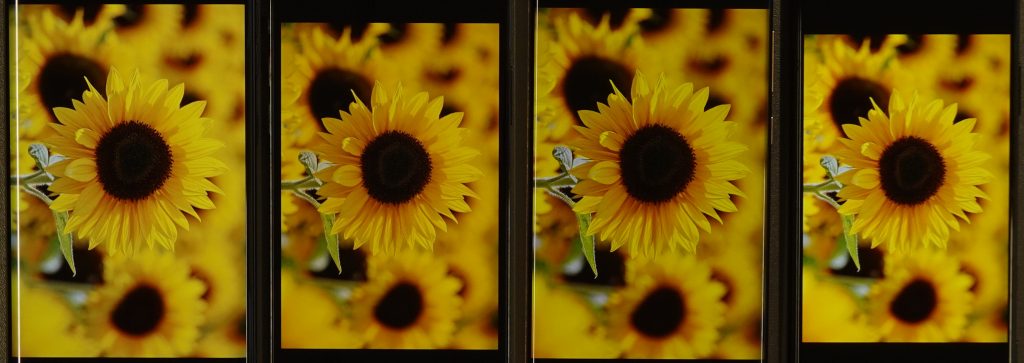
The device quickly shifts to a bluer cast when viewed in angle but its overall impact is slight.
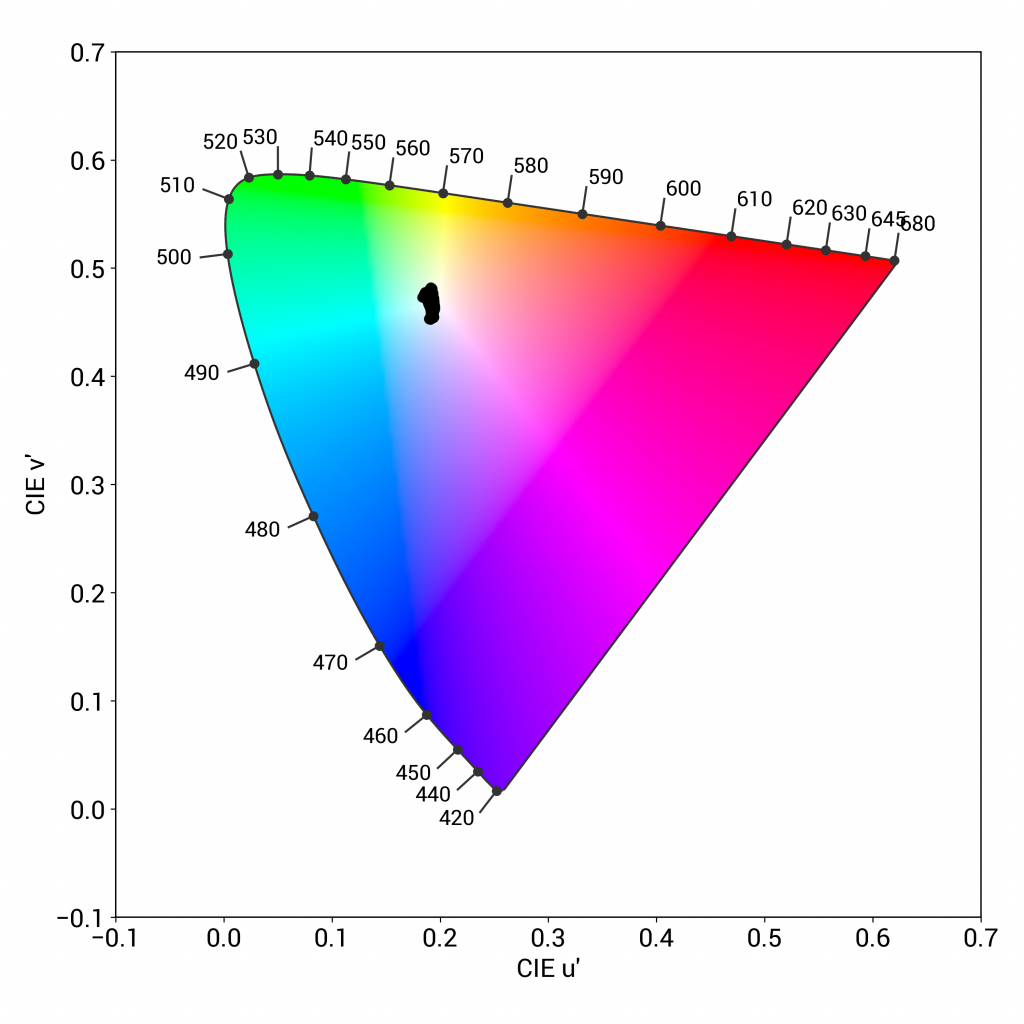
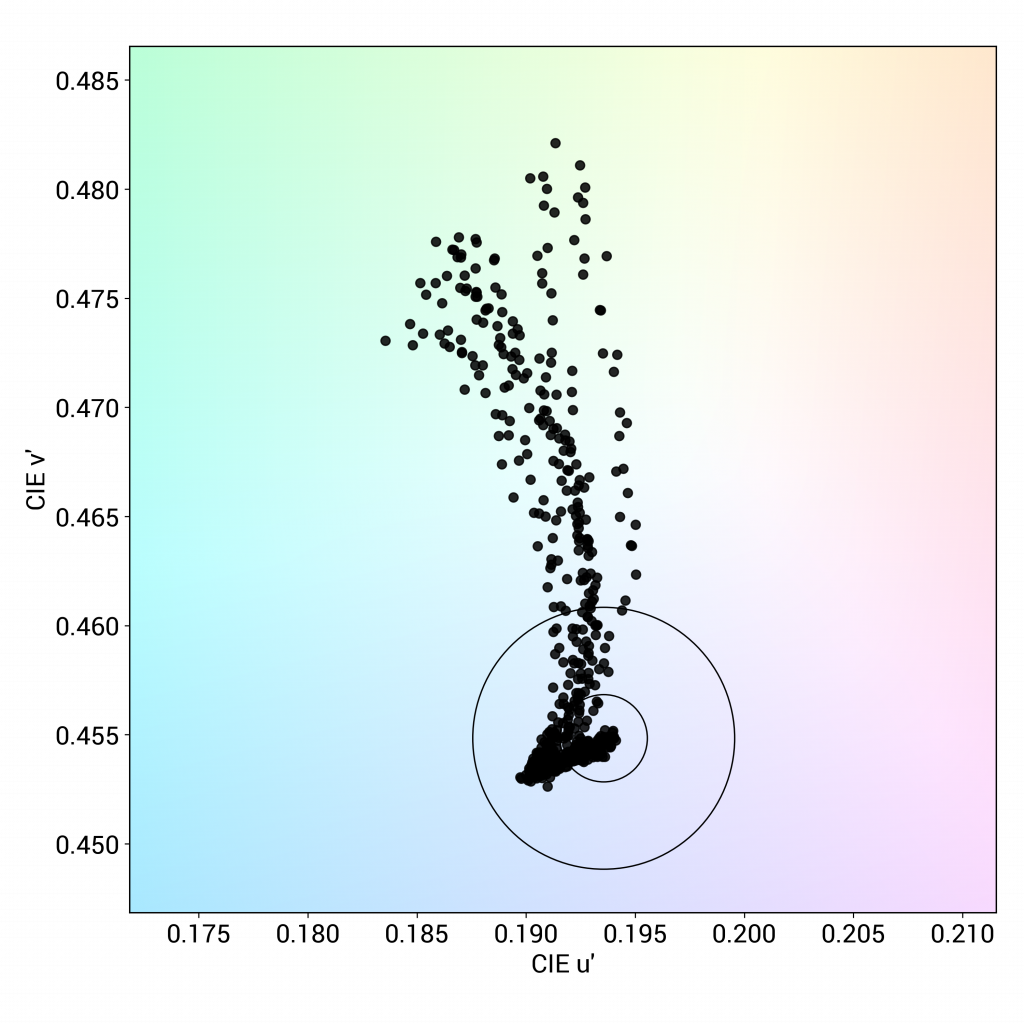
Unlike many other devices’ responses to the BLF, the LG Wing’s color remains nearly unchanged (as you may have noticed in the photo array illustrating BLF brightness in the readability section above), but that nice appearance comes at the cost of blue light efficiency. The LG Wing’s blue light attenuation is only of 22%, which we consider low in our range of tested devices. The graph below shows the visible spectrum for the BLF both on and off:
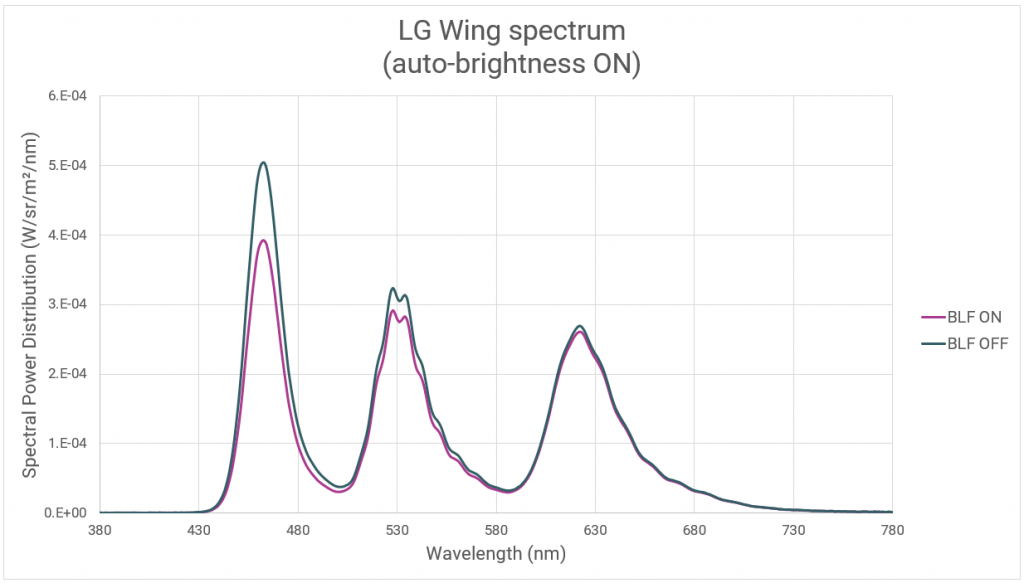
Blue light wavelengths are situated in the 400-500 nm range; the efficiency of the BLF is related to the decrease of the peak in this range. In the case of the LG Wing, the blue peak is still too significant in the light mix output.

Video
LG Wing
71
91
DXOMARK uses the device’s video (or browser) app to show dynamic content when measuring the device’s display for brightness, contrast, gamma, and color.
At its default settings, the LG Wing’s display lacks a bit of brightness for users to be truly comfortable when watching HDR10 content. (Given the scale of the graph, the measurement results for HDR10 and SDR brightness appear essentially identical, so you may need to click on the legend for SDR results to reveal the HDR10 results, or vice-versa.)
Even so, there is enough contrast to show a fair amount of detail, though dark content is also not quite bright enough. Video color saturation is OK, but there is a visible blue-green cast that can give skin tones an unnatural look.


Motion
LG Wing
83
87

Touch
LG Wing
67
85
In terms of motion, the LG Wing shows a few frame drops at 30 fps (as shown below left) and at 60 fps, but no frame drops are noticeable when playing video games. That said, instead of smooth transitions between frames, the device shows frame duplications (impacting motion blur) that can be seen in video games. As for reactivity, the device pauses slightly before resuming video playback.
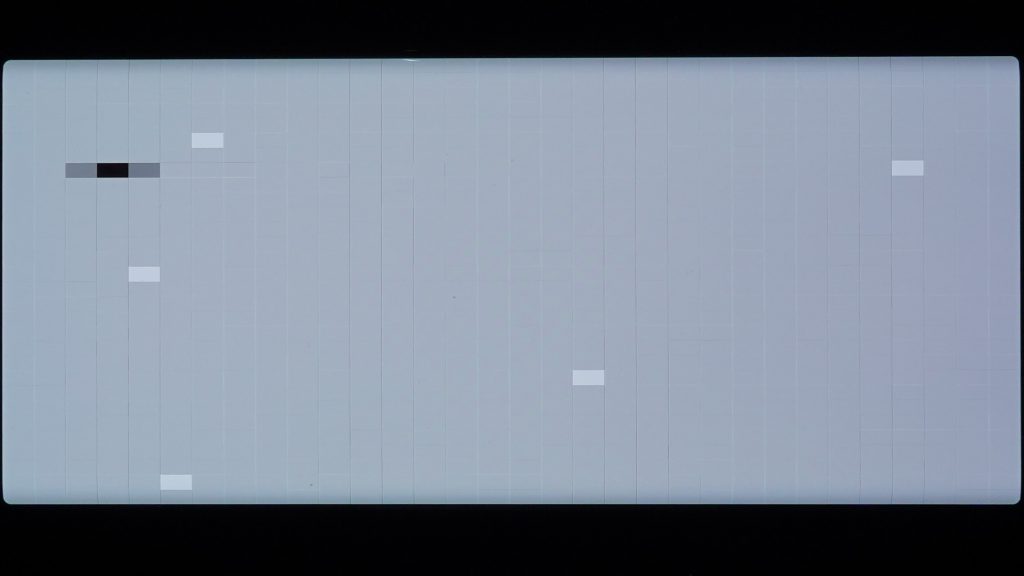
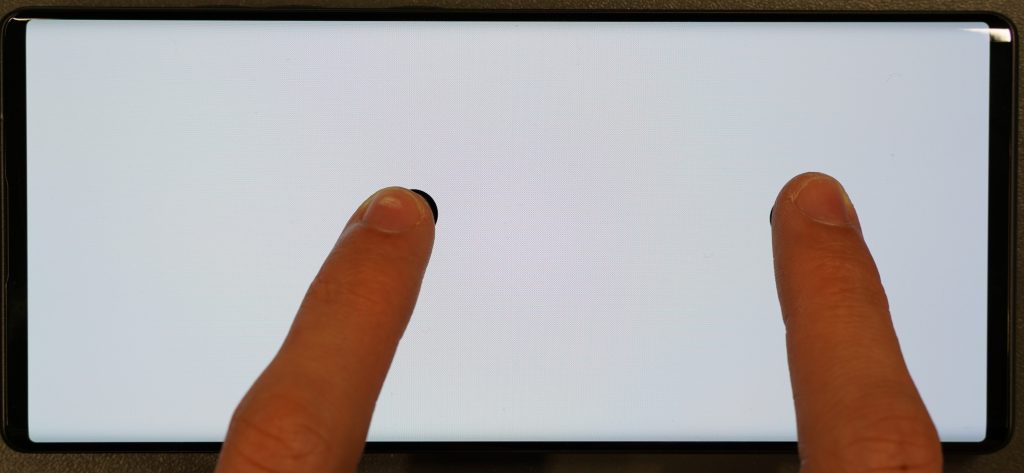
For touch, the LG Wing accurately zooms in the gallery app, as shown above right, but some frame duplications are visible when swiping between images. Further, the device lacks smoothness when browsing; and when gaming, the lack of smoothness detracts from the experience.

Artifacts
LG Wing
84
86
The LG Wing’s performance puts it in a first-place tie with the OnePlus 8 Pro in this category. The LG device’s mean reflectance is a very good 4.7%; the graph below shows its reflectance curve over the visible spectrum:
Flicker can be noticeable in low-light conditions:
The device shows regular ghost touches both in portrait and landscape modes, which keep it from racking up an even high score. Judder noticeable at 24 fps, but not at 30 and 60 fps. Gamers will be pleased to know that while aliasing is noticeable, it is quite well managed.
Conclusion
The appearance of the LG Wing with its novel design created quite a buzz in the smartphone world. Happily, it posted solid scores in all Display categories and showed excellent control of artifacts, earning itself a place in the upper echelons of all devices tested thus far.
Pros
- Brightness levels are basically well adapted, offering good readability in all tested conditions.
- The device’s second screen does not affect the performance of the first screen when used.
- Touch accuracy is very well managed in the gallery app and when playing video games (though the bottom corners are hard to select).
- Frame drops are quite well managed, which enhances the user experiences both when watching videos or playing video games.
Cons
- Colors have a noticeable green cast.
- Video performance could be enhanced by better control of dark tones and a higher brightness level.
- Light transitions need to be smoother; the device takes too long to react to rising light levels indoors, and its brightness oscillates a bit as it responds to falling light levels.
- The blue light filter should have a more significant impact on blue light levels.


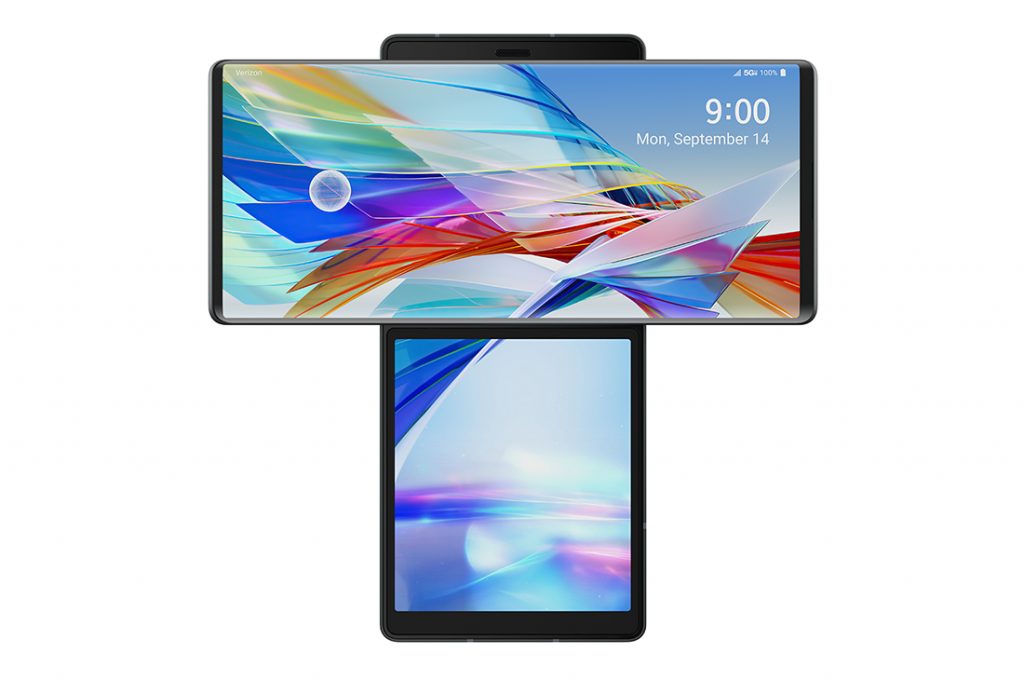

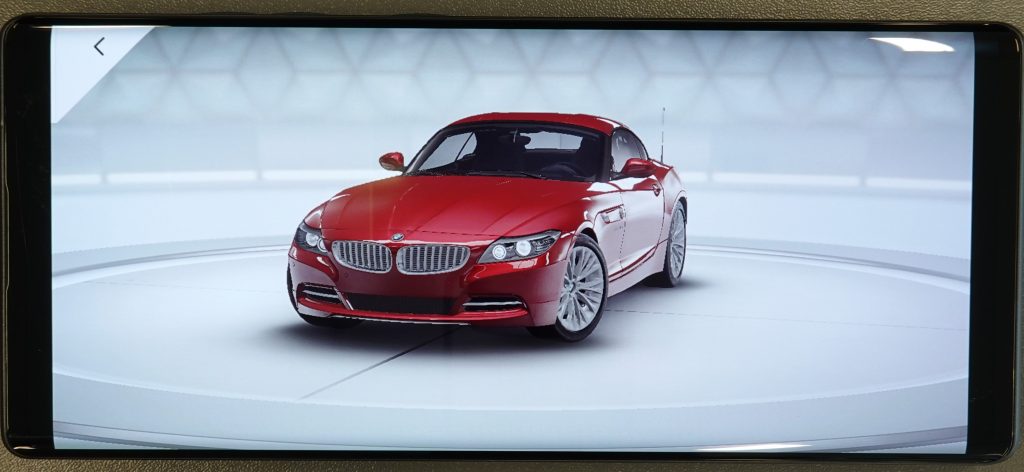
DXOMARK encourages its readers to share comments on the articles. To read or post comments, Disqus cookies are required. Change your Cookies Preferences and read more about our Comment Policy.